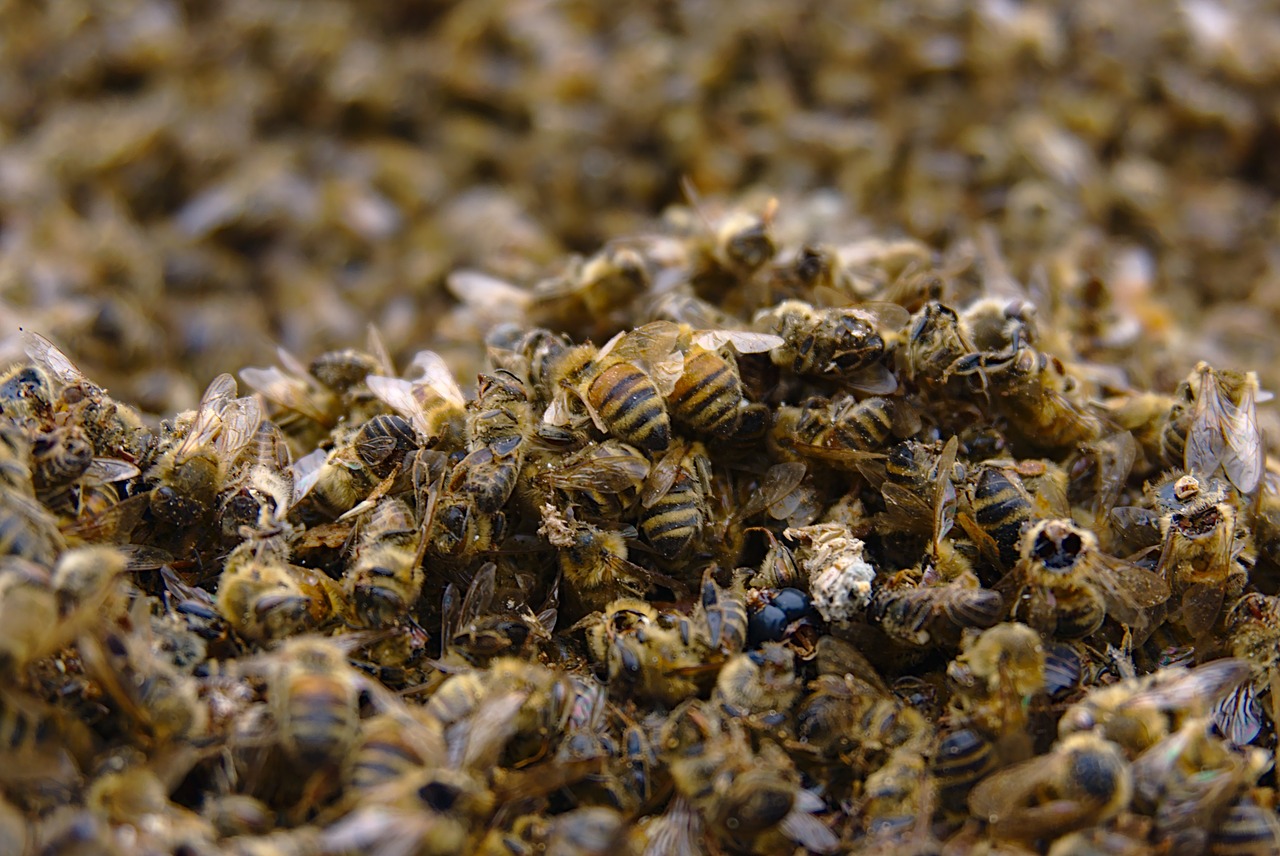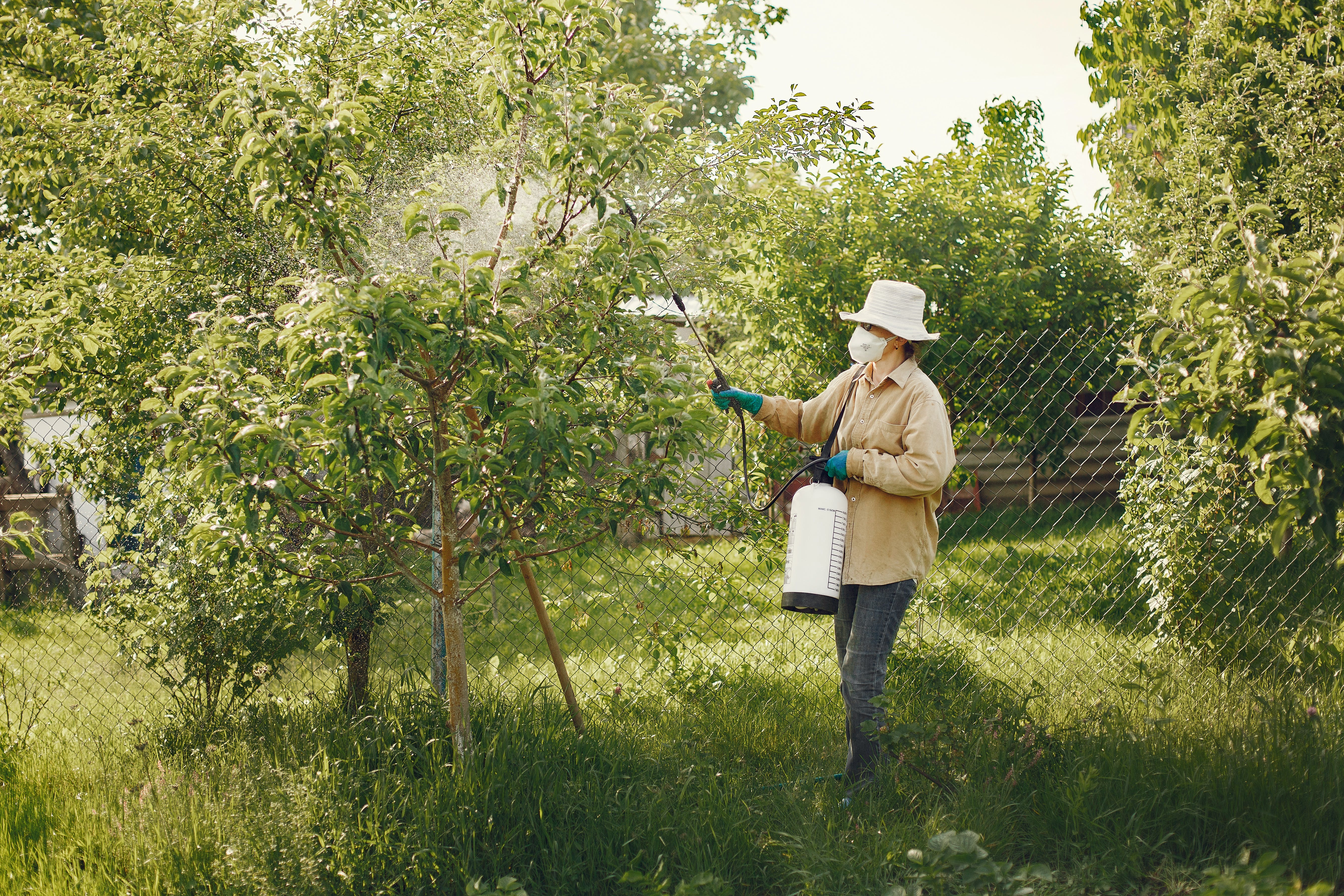Why Did My Bees Die?
Discovering a lifeless hive after the winter season can be an emotional blow for beekeepers. Understanding the reasons behind such a loss is a crucial step in effectively managing bees and improving the hive's survival chances.
Key killers range from mite infestations to starvation, but many other potential causes also exist. These threats could include bee-specific ailments such as Nosema disease, environmental challenges like internal hive condensation, or simply extremely cold temperatures that the bees couldn't withstand.
Investigating the Cause of Death
The end of your hive doesn’t mean the end of your responsibilities. Conducting a thorough inspection can give you a clear snapshot of what might have led to the collapse. There are specific clues to keep an eye out for, each indicative of a particular threat.
Varroa Mite Infestation
Varroa mites can devastate a hive, turning a once-thriving colony into a silent shell. The infestation's wake often reveals itself in a significant mite build-up on the debris board or hive's bottom. Recognizing this sign is a critical step in deducing the hive's unfortunate fate.
When mites invade a bee colony, they compromise the overall health of the hive by weakening the bees and acting as vectors for various diseases. Timely identification and treatment can curb the mite population, a crucial measure in promoting the hive's survival.
| Mite Management: The use of screen bottom boards in your hive setup can aid in mite control, as mites often fall through the screen and cannot return to the hive. |
Deformed-Wing Virus (DWV)
DWV is a deadly disease that affects bees, completely altering their physical condition. Manifesting as short abdomens or strangely deformed wings on bees, the illness irreversibly cripples their flight capabilities and, consequently, their ability to contribute effectively to their colony.
DWV, just like many others, is vectored by the dreaded Varroa mites. While visibly devastated bees indicate an advanced stage of the disease, early detection can allow beekeepers to mitigate its impact. Assessing honey bee health regularly and putting preventive measures in place can help counteract this crippling virus.
Paralysis Virus

The chronic bee paralysis virus is another significant threat to consider. Dead bees that boast a shiny, greasy, or unusually darkened exterior may have fallen victim to this lethal condition. Spread mainly by Varroa mites, this virus works silently, often catching beekeepers off guard with its destructive impact.
The paralysis virus, despite its quiet onset, causes deep distress in bees. Infected bees exhibit impaired movement, difficulty in flying, and even unusual aggressive behavior towards healthy members. Gradually, this leads to a weakened hive, often culminating in a sudden bee colony collapse if left unchecked.
K Wing Virus
The distinctive K Wing Virus becomes apparent when a bee's wings split apart, taking on a noticeable "K" shape. This virus, spread by the omnipresent Varroa mite, directly affects a bee's ability to fly, making it challenging for them to fulfill their roles within the colony.
This disease, although less common than others, can compromise the overall productivity of the hive. Infected bees struggle with their navigational abilities, and they may appear disoriented, further destabilizing the hive structure and harmony.
Pesticide Poisoning

An ominous sight of dead bees littering the front of the hive can signal a tragic case of pesticide poisoning. Bees falling victim to toxic chemicals often display a noticeably protruding tongue, a common indication of pesticide exposure.
Pesticide poisoning often results in a rapid colony loss. Apart from the immediate loss of life, consistent exposure to harmful substances can impede a hive's recovery. It affects the bees' reproduction, navigation, and foraging abilities, leading to long-term consequences on the colony's growth and sustainability.
| Safety Tip: Always check for bee-friendly labels when buying garden products. Pesticide-free is a bee's guarantee! |
Starvation
Dead bees found within cells, their rear abdomens sticking out in a “head-first” position, is a clear signal of this issue. Despite the presence of stored honey, bees could still perish if they can’t access it—a dire situation often precipitated by cold temperatures or disease.
As the population dwindles, the bees can no longer adequately maintain the temperature of the hive or protect against predators. This accelerated honey bee decline can result in a complete hive failure, a grave reminder of the importance of adequate food supply, especially during the cold months.
Excessive Moisture
A hive that seems unusually damp or demonstrates signs of mold might have fallen victim to excessive moisture. Similar to condensation, moisture trapped within the hive during the colder months can cause significant harm to the residing bees.
Moisture build-up in the hive can lead to a multitude of issues. It predisposes the bees to hypothermia and also promotes the growth of mold in the hive, which can lead to additional health complications. Good hive ventilation is the key to preventing such a situation from endangering your bee colony.
Dysentery or Nosema
Brown stains or streaks on the outside of the hive are often indicative of dysentery or nosema infection. These potentially fatal conditions can severely impact honey bee health. Dysentery, in particular, is more common during winter months when bees aren’t capable of leaving the hive to defecate.
Nosema is a parasitic fungus responsible for two types of diseases in honey bees, Nosema Apis and Nosema Ceranae. Both can cause severe dysentery and lead to reduced lifespan and productivity of bees. Spotting the signs early can allow the beekeeper to introduce adequate measures to counter these issues, safeguarding the colony from substantial damage.
Poor Queen Health
An unhealthy or deceased queen is a significant threat to the hive as she is the sole egg-layer in the colony. If the queen’s health deteriorates or if she dies without a new queen to take her place, the hive's population decreases over time. This lack of new worker bees can eventually lead to the hive’s collapse.
The queen’s health has a direct bearing on the vigor of the colony. Since the queen lays all the eggs, the health, behavior, and overall productivity of the hive hinge significantly on her. In essence, a robust queen fosters a robust hive, while a weak queen can presage the hive’s decline.
| Queen's Rule: Always have a spare queen ready. This ensures a seamless transition if something should happen to your current queen and helps prevent a significant drop in bee populations. |
Pests and Small Hive Beetle Infestation
The small hive beetle is a formidable enemy for honey bees. Aside from Varroa mites, they are one of the major pests that can cause severe damage to hives. These beetles can destroy honeycombs, and consume stored honey and pollen, leading to significant nutritional loss for the bees.
A severe infestation of small hive beetles often leads to colony abandonment, as the bees are unable to protect their home from the destructive pests. Over time, unchecked beetle populations can decimate a once-thriving hive, emphasizing the importance of effective pest management in the pursuit of successful beekeeping.
Climate Change and Severe Weather
Climate change can disrupt the life cycle and important functions of bees, which are accustomed to specific weather patterns. Temperature fluctuations, altered precipitation levels, and extreme weather events can stress bee colonies, potentially leading to substantial die-offs.
Severe weather conditions such as prolonged drought, heatwaves, or extended cold periods can diminish plant diversity and availability, reducing the bees' sources of food supply. Changes in precipitation can create unfavorable conditions for bee flight and foraging activities.

Foulbrood Disease
Foulbrood is a lethal disease that primarily affects the brood of honey bees. Caused by a bacterium, foulbrood exists in two types: American Foulbrood (AFB) and European Foulbrood (EFB). Each type presents subtly different symptoms, but both can devastate a colony.
AFB causes the larvae to darken and decay within their cells, releasing a foul odor. EFB affects younger larvae and halts their growth. Infected larvae usually appear twisted within the cell, and the entire colony can exhibit a spotty brood pattern.
Lifecycle Impact of Bee Diseases
Different diseases can drastically alter the lifecycle of bees. Understanding these impacts can be crucial in early detection and treatment.
The table below compares the impacts of five common diseases on the lifecycle of bees in detail:
| Disease | Impact on Lifecycle | Preventive Measures |
| Varroa Mite Infestation | Shortens the lifespan of bees by weakening their immune systems, making them prone to other diseases. | Regular monitoring and control of Varroa mite populations. |
| Deformed-Wing Virus (DWV) | Infections in larvae or young bees can lead to significant deformities and shorter lifespans. | Regular hive health assessments, managing Varroa mite populations. |
| Foulbrood Disease | Kills the larvae before they can mature into adult bees, limiting the growth of the colony. | Regular hive inspections, appropriate medication, or destruction of infected equipment. |
| Nosema Disease | Affects the digestive systems of adult bees, shortening their lifespan and reducing the overall productivity of the hive. | Regularly clean hive equipment, provide a balanced diet, and keep bee colonies strong. |
| Paralysis Virus | Symptomatic bees are often expelled from the colony, reducing the overall population. | Regular inspections for early detection and maintaining excellent colony health to boost immunity against the virus. |
Do You Have a Dead Out?
Dead-outs refer to the unfortunate but inevitable loss of a bee colony, something that all beekeepers will likely encounter at some point in their beekeeping journey. Despite practicing sound beekeeping techniques and treating your bees as well as you can, it's impossible to entirely prevent a hive from dying out.
Dead-outs can occur for various reasons, including starvation, disease, or infestations, and often happen during the colder months or early spring. While losing a colony is always disappointing, the equipment and resources left behind, such as hives and frames, can still be reused to benefit new colonies or existing hives if treated correctly.
Dealing with Dead Outs
The first step in dealing with dead-outs is to protect the hive from wax moths, which can quickly damage the comb and woodenware. Exposing equipment to sunlight can help, but severe cases may require freezing or using Paramoth. Acting fast prevents further degrading of your beekeeping equipment.
It's important to identify why the hive died, with common causes being starvation, poor queen health, or Varroa mites. Signs like bees clustered headfirst in cells or excessive fecal matter indicate potential issues. Inspecting the equipment for disease or pests can help ensure no infected items are reused, which can help safeguard your equipment for new healthy hives.
Once the cause is known, the remaining resources can hopefully be salvaged with the right care. Remove dead bees, relocate the hive, and let surviving colonies rob the honey. Wax moth or Small Hive Beetle infestations may need freezing or salting treatments. These steps help beekeepers make the most of their equipment and minimizing loss.
For references and tips on inspecting your hive, check out our practical tips for conducting a hive inspection.
Preserving Our Pollinators
Being a successful beekeeper involves extensive knowledge and understanding of the numerous threats that can cause harm to a colony. The right insight paired with vigilant monitoring can aid in making informed decisions, increasing the odds of a hive's survival.
However, the responsibility rests not merely on avoiding the downfall of a colony. It’s about fostering an environment where bees can thrive. With the role bees play in our ecosystem, their well-being directly correlates to ours. The effort to protect bees is, in truth, an investment in our shared future.

